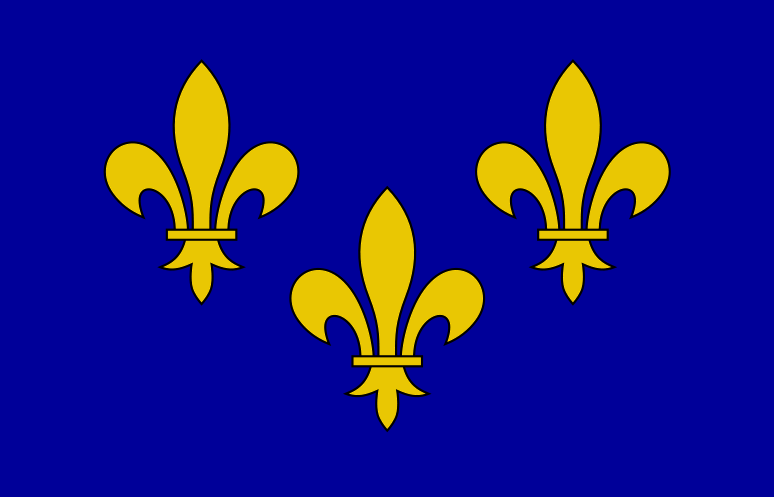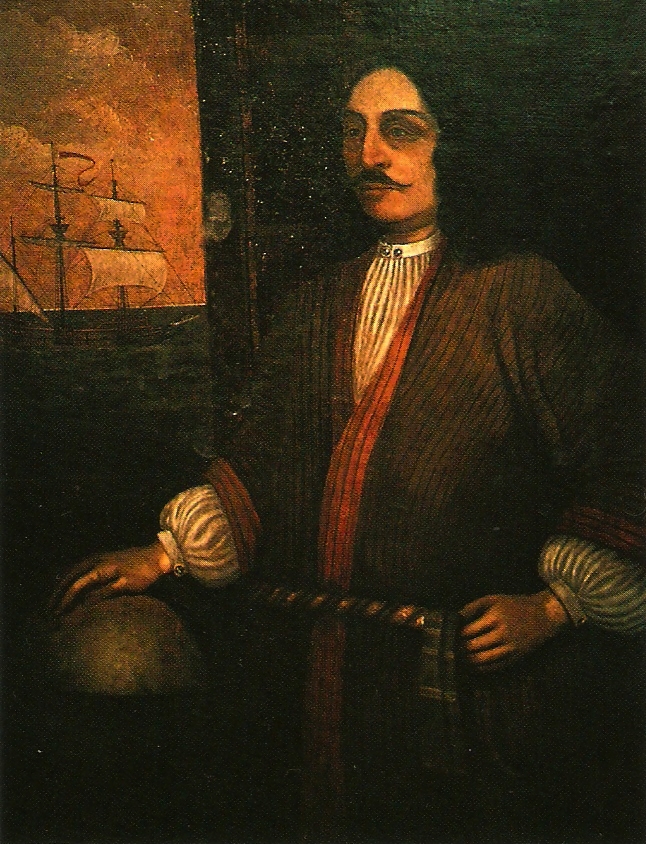|
1595 Deaths
Events January–June * January – Mehmed III succeeds Murad III, as sultan of the Ottoman Empire. * January 17 – During the French Wars of Religion, Henry IV of France declares war on Spain. * April 8 (March 29 O.S.) – Combined Taungoo–Lan Na armies break the rebel Thado Dhamma Yaza's siege of Taungoo, in modern-day Myanmar. * April 15 – Sir Walter Raleigh travels up the Orinoco River, in search of the fabled city of ''El Dorado''. * May 18 – The Treaty of Teusina brings to an end the Russo-Swedish War (1590–95). * May 24 – The ''Nomenclator'' of Leiden University Library appears, the first printed catalog of an institutional library. * May 29 – George Somers and Amyas Preston travel to aid Raleigh's El Dorado expedition but failing to meet him instead raid the Spanish Province of Venezuela * June 9 – Battle of Fontaine-Française: Henry IV of France defeats the Spanish, but is nearly killed due to his rashness. J ... [...More Info...] [...Related Items...] OR: [Wikipedia] [Google] [Baidu] |
January
January is the first month of the year in the Julian and Gregorian calendars and is also the first of seven months to have a length of 31 days. The first day of the month is known as New Year's Day. It is, on average, the coldest month of the year within most of the Northern Hemisphere (where it is the second month of winter) and the warmest month of the year within most of the Southern Hemisphere (where it is the second month of summer). In the Southern hemisphere, January is the seasonal equivalent of July in the Northern hemisphere and vice versa. Ancient Roman observances during this month include Cervula and Juvenalia, celebrated January 1, as well as one of three Agonalia, celebrated January 9, and Carmentalia, celebrated January 11. These dates do not correspond to the modern Gregorian calendar. History January (in Latin, ''Ianuarius'') is named after Janus, the god of beginnings and transitions in Roman mythology. Traditionally, the original Roman calendar c ... [...More Info...] [...Related Items...] OR: [Wikipedia] [Google] [Baidu] |
Battle Of Fontaine-Française
The Battle of Fontaine-Française occurred on 5 June 1595 between the French royal forces of King Henry IV of France and troops of Spain and the Catholic League commanded by Juan Fernández de Velasco and Charles of Lorraine, Duke of Mayenne, during the eighth and final war (1585-1598) of the French Wars of Religion. Background In early June 1595, Don Juan Fernández de Velasco ( governor of Milan and Constable of Castile) crossed the Alps with an army of 12,000 men from Italy and Sicily. In the Bishopric of Besançon he was joined by Charles of Mayenne (chief of the Catholic League). Together they moved on Dijon in order to take the city. Warned of their movements, Henry IV raced to Troyes with 3,000 men that he was able to gather. The battle The battle took place on 5 June at Fontaine-Française (Burgundy). That morning, Henry IV accompanied his scouts. They encountered the Spanish troops by accident, and – as at the Battle of Eu the year before – Henry attac ... [...More Info...] [...Related Items...] OR: [Wikipedia] [Google] [Baidu] |
June 9
Events Pre-1600 * 411 BC – The Athenian coup succeeds, forming a short-lived oligarchy. * 53 – The Roman emperor Nero marries Claudia Octavia. * 68 – Nero dies by suicide after quoting Vergil's ''Aeneid'', thus ending the Julio-Claudian dynasty and starting the civil war known as the Year of the Four Emperors. * 721 – Odo of Aquitaine defeats the Moors in the Battle of Toulouse. * 747 – Abbasid Revolution: Abu Muslim Khorasani begins an open revolt against Umayyad rule, which is carried out under the sign of the Black Standard. * 1311 – Duccio's Maestà, a seminal artwork of the early Italian Renaissance, is unveiled and installed in Siena Cathedral in Siena, Italy. * 1523 – The Parisian Faculty of Theology fines Simon de Colines for publishing the Biblical commentary ''Commentarii initiatorii in quatuor Evangelia'' by Jacques Lefèvre d'Étaples. * 1534 – Jacques Cartier is the first European to describe and map the Saint Lawr ... [...More Info...] [...Related Items...] OR: [Wikipedia] [Google] [Baidu] |
Province Of Venezuela
The Venezuela Province (or Province of Caracas) was a province of the Spanish Empire (from 1527), of Gran Colombia (1824-1830) and later of Venezuela (from 1830), apart from an interlude (1528 - 1546) when it was contracted as a concession by the King of Spain to the German Welser banking family, as Klein-Venedig. Colonial history It has its origins with the 1527 foundation of Santa Ana de Coro by Juan de Ampíes, the province's first governor. Coro was the province's capital until 1546, followed by El Tocuyo (1546 - 1577). The capital was moved to Caracas in 1577 by . At one time Calabozo (founded 1724) wa ... [...More Info...] [...Related Items...] OR: [Wikipedia] [Google] [Baidu] |
Preston–Somers Expedition
The Preston–Somers expedition, or the Capture of Caracas, was a series of military actions that took place from late May until the end of July 1595 during the Anglo-Spanish War. The English expedition headed by George Somers and Amyas Preston sailed to the Spanish Main initially intending to support Sir Walter Raleigh's expedition which set out at the same time. After failing to meet, the expedition went on their own venture along the coast of the Spanish Province of Venezuela and captured the fort at La Guaira before they headed south, inland. After making an arduous trek through the mountains the English were able to outmanoeuvre the waiting Spanish force and captured the colonial city of Caracas. p 305 The failure of a ransom led to the plundering and torching of the city and to the capture of Coro, before a brief excursion to the Spanish West Indies.Marley 2005, pp. 830–831. Despite the challenges they faced the expedition was a success for the English, who were able t ... [...More Info...] [...Related Items...] OR: [Wikipedia] [Google] [Baidu] |
Amyas Preston
Amyas Preston (died 1609) was an English privateer of the Elizabethan period. His career was largely spent in the Caribbean, as were other more famous corsairs of the age such as Francis Drake, John Hawkins and Walter Raleigh. He is principally remembered for his participation in the naval battle of the British Royal Navy against the Spanish Armada in 1588, as well as for the looting and burning of Caracas in 1595 during what is known as the Preston–Somers expedition. Biography Early life Little is known about his Preston's family and upbringing, but he is believed to have come from Cricket St Thomas in Somerset. In 1581 he married a London widow called Julian Burye. He first saw combat in 1588, during the English victory over the Spanish Armada near Calais, where he was wounded and gained a certain level of renown for his actions. Capture of Caracas In 1595, he took part in the Preston Somers Expedition, co-lead with George Somers, which was initially supposed ... [...More Info...] [...Related Items...] OR: [Wikipedia] [Google] [Baidu] |
George Somers
Sir George Somers (before 24 April 1554 – 9 November 1610) was an English privateer and naval hero, knighted for his achievements and the Admiral of the Virginia Company of London. He achieved renown as part of an expedition led by Sir Amyas Preston that plundered Caracas and Santa Ana de Coro in 1595, during the undeclared Anglo-Spanish War. He is remembered today as the founder of the English colony of Bermuda, also known as the Somers Isles. Career Born in Lyme Regis, Dorset, in 1554, George was the son of John Somers and his wife. From a young age, he became a skilled and well-known seaman and owned at least one ship, the ''Julian'', whose home port was Lyme Regis. Somers' first venture in command of the ''Flibcote'', in company of three other vessels during the undeclared Anglo-Spanish War, on a raid to Spain; he brought home Spanish prizes worth more than £8,000. Preston Somers Expedition Somers then joined up with another seaman Amyas Preston who had f ... [...More Info...] [...Related Items...] OR: [Wikipedia] [Google] [Baidu] |
May 29
Events Pre-1600 * 363 – The Roman emperor Julian defeats the Sasanian army in the Battle of Ctesiphon, under the walls of the Sasanian capital, but is unable to take the city. * 1108 – Battle of Uclés: Almoravid troops under the command of Tamim ibn Yusuf defeat a Castile and León alliance under the command of Prince Sancho Alfónsez. *1167 – Battle of Monte Porzio: A Roman army supporting Pope Alexander III is defeated by Christian of Buch and Rainald of Dassel. * 1176 – Battle of Legnano: The Lombard League defeats Emperor Frederick I. * 1233 – Mongol–Jin War: The Mongols entered Kaifeng after a successful siege and began looting in the fallen capital of the Jin dynasty. * 1328 – Philip VI is crowned King of France. * 1416 – Battle of Gallipoli: The Venetians under Pietro Loredan defeat a much larger Ottoman fleet off Gallipoli. *1453 – Fall of Constantinople: Ottoman armies under Sultan Mehmed II capture Const ... [...More Info...] [...Related Items...] OR: [Wikipedia] [Google] [Baidu] |
Leiden University Library
Leiden University Libraries is a library founded in 1575 in Leiden, Netherlands. It is regarded as a significant place in the development of Culture of Europe, European culture: it is a part of a small number of cultural centres that gave direction to the development and spread of knowledge during the The Age of Enlightenment, Enlightenment. This was due particularly to the simultaneous presence of a unique collection of exceptional sources and scholars. Holdings include approximately 5,200,000 volumes, 1,000,000 e-books, 70,000 electronic journal, e-journals, 2,000 current paper Academic journal, journals, 60,000 Oriental and Western manuscripts, 500,000 Letter (message), letters, 100,000 maps, 100,000 Printmaking, prints, 12,000 drawings and 300,000 photographs. The library manages the largest collections worldwide on Indonesia and the Caribbean. Furthermore, Leiden University Libraries is the only heritage organization in The Netherlands with three registrations of documents in ... [...More Info...] [...Related Items...] OR: [Wikipedia] [Google] [Baidu] |
May 24
Events Pre-1600 * 919 – The nobles of Franconia and Saxony elect Henry the Fowler at the Imperial Diet in Fritzlar as king of the East Frankish Kingdom. * 1218 – The Fifth Crusade leaves Acre for Egypt. * 1276 – Magnus Ladulås is crowned King of Sweden in Uppsala Cathedral. * 1487 – The ten-year-old Lambert Simnel is crowned in Christ Church Cathedral, Dublin, Ireland, with the name of Edward VI in a bid to threaten King Henry VII's reign. * 1567 – Erik XIV of Sweden and his guards murder five incarcerated Swedish nobles. *1595 – ''Nomenclator'' of Leiden University Library appears, the first printed catalog of an institutional library. 1601–1900 * 1607 – One hundred-five English settlers under the leadership of Captain Christopher Newport established the colony called Jamestown at the mouth of the James River on the Virginia coast, the first permanent English colony in America. * 1621 – The Protestant Union is formally ... [...More Info...] [...Related Items...] OR: [Wikipedia] [Google] [Baidu] |
Russo-Swedish War (1590–95)
Wars between Russia and Sweden Sweden, formally the Kingdom of Sweden,The United Nations Group of Experts on Geographical Names states that the country's formal name is the Kingdom of SwedenUNGEGN World Geographical Names, Sweden./ref> is a Nordic country located on ... have been recorded since as early as the 12th century. These conflicts include: See also * * * * * * * {{Russian conflicts Russia and Sweden Russia–Sweden military relations *Russia *Sweden Wars, Sweden Wars, Sweden Wars, Russia Wars, Russia ... [...More Info...] [...Related Items...] OR: [Wikipedia] [Google] [Baidu] |





